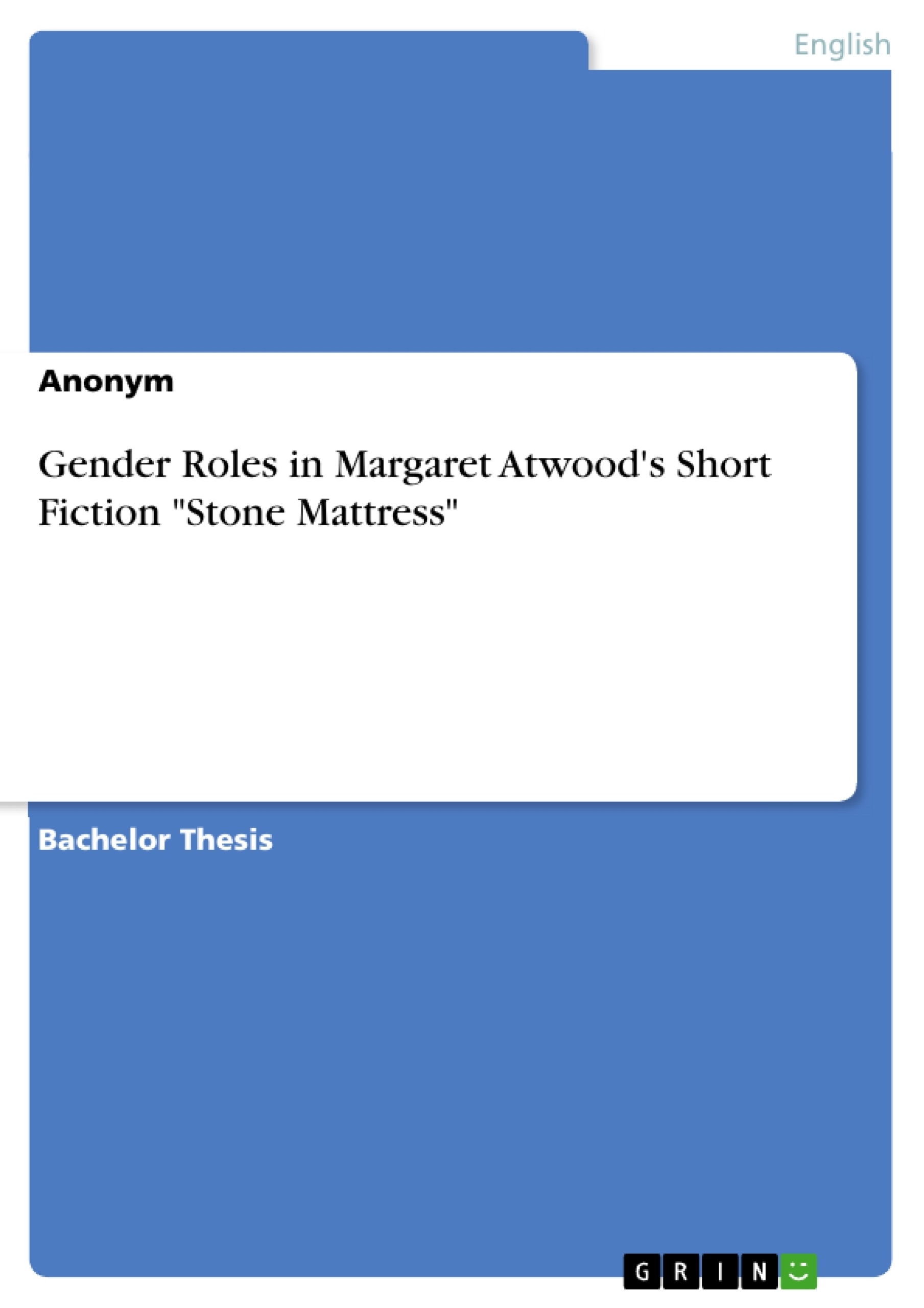The aim of this thesis will be to analyze whether the development of gender roles can in fact be found in Atwood’s newest short story collection "Stone Mattress", and if so, how that development unfolds in the writing. This paper will start with a definition of terms such as sex, gender and gender roles, which will aid in clarifying the meaning of those concepts and therefore simplify the following analysis. Furthermore, a historical overview over the women’s movement in Canada shall distinguish the three waves of feminism and highlight the different aims of each wave, as well as the evolution of women’s roles in their respective society.
With the theoretical knowledge gained in mind, we will look at Atwood’s earlier short fiction and briefly analyze a few of her earlier works with special attention to the way in which she portrays her characters regarding gender roles. This first analysis will lead to the main portion of this paper which will then deal with her short story collection "Stone Mattress". An in-depth analysis will take a look at both, her female and male characters and answer the question of whether or not they adhere to traditional gender roles. Additionally, I will establish if a change in the way Atwood portrays her characters can be detected. Finally, this thesis will be concluded by summarizing the findings and explicitly answering the question: Has Atwood’s writing changed parallel to the development of the women’s movement?
The Canadian author Margaret Atwood is one of the most important literary chroniclers of our time. Her works cover a great number of literary genres and have earned her a spot in the Canadian canon. Her novels, children’s books and short stories as well as her poetry merely portray the tip of the iceberg that is Margaret Atwood’s oeuvre. Literary critic, lecturer, teacher, active member in various literary organization and editor slowly begin to complete the long list of Atwood’s fields of expertise. Her works appeal both to literary scholars and the average reader, and are praised for their level of eloquence and wit. Not surprisingly, the list of Atwood’s achievements and awards is just as long as the list of her competences. Among aforesaid achievements are for example the Man Booker Prize and the renowned Governor General’s Literary Award, which she received twice.
Table of Contents
- INTRODUCTION.
- DEFINING TERMINOLOGY: SEX, GENDER AND GENDER ROLES
- THE WOMEN'S MOVEMENT.
- GENDER ROLES IN ATWOOD'S EARLIER SHORT FICTION.
- GENDER ROLES IN MARGARET ATWOOD'S MOST RECENT SHORT FICTION STONE MATTRESS.
- ALPHINLAND...
- REVENANT.
- DARK LADY
- THE FREEZE-DRIED GROOM..
- STONE MATTRESS
- CONCLUSION
Objectives and Key Themes
This thesis examines the development of gender roles in Margaret Atwood's short story collection *Stone Mattress*, focusing on the author's portrayal of female and male characters. The aim is to investigate whether Atwood's writing reflects the evolution of gender roles, specifically within the context of the Canadian women's movement and its changing goals. The analysis will explore the ways in which Atwood's more recent short fiction challenges or reinforces traditional gender expectations.
- The portrayal of gender roles in Margaret Atwood's short stories.
- The evolution of the women's movement in Canada and its impact on feminist themes in Atwood's work.
- The relationship between literature and societal change, particularly regarding gender equality and women's rights.
- The role of feminist perspectives in interpreting Atwood's fiction.
- The influence of Atwood's career as a writer on her exploration of gender issues within her writing.
Chapter Summaries
The thesis begins by defining key terms related to sex, gender, and gender roles, establishing a framework for analyzing the concepts within Atwood's fiction. The paper then provides a historical overview of the women's movement in Canada, highlighting the three waves of feminism and their respective aims. Chapter 4 examines Atwood's earlier short fiction, offering a brief analysis of her portrayal of gender roles in those works. Chapter 5 delves into the analysis of Atwood's short story collection *Stone Mattress*, focusing on the representation of both female and male characters and their adherence to traditional gender expectations.
Keywords
Key themes and concepts explored in the thesis include: gender roles, feminist literature, Margaret Atwood, *Stone Mattress*, women's movement, Canadian literature, gender studies, patriarchy, societal change, literary analysis, and feminist theory.
- Quote paper
- Anonym (Author), 2016, Gender Roles in Margaret Atwood's Short Fiction "Stone Mattress", Munich, GRIN Verlag, https://www.grin.com/document/1307328



